Red Admiral Butterfly - Vanessa atalanta
Phylum: Arthropoda - Class: Insecta - Order: Lepidoptera - Family: Nymphalidae

Seen on the wing from late March until October, this striking butterfly, with a wingspan of 5.5 to 6cm, is one of the best known of garden visitors, being especially attracted to those with fruit trees. These butterflies are particularly fond of windfalls and over-ripe fruit. If you cut an Ash hedge and leave the clippings to lie in the sun, the fermenting leaves will also attract any nearby Red Admirals, which can become very drowsy (drunken!) and unable to fly.
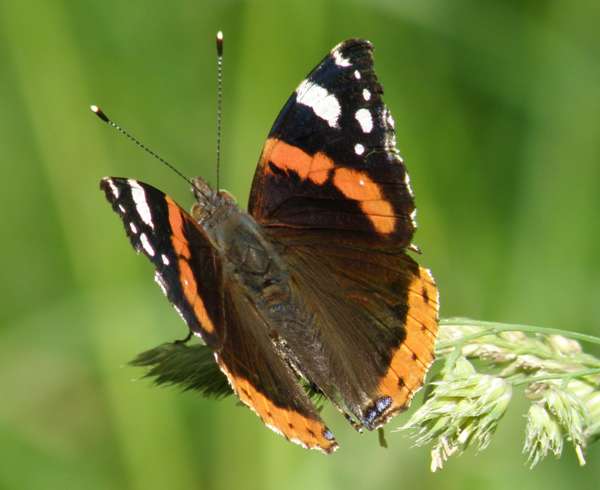
Fond of nectar, the adult Red Admiral is attracted to Buddleias and to many other garden flowers including stonecrops (Sedum spp). Railway embankments are therefore often well populated with these colourful butterflies.
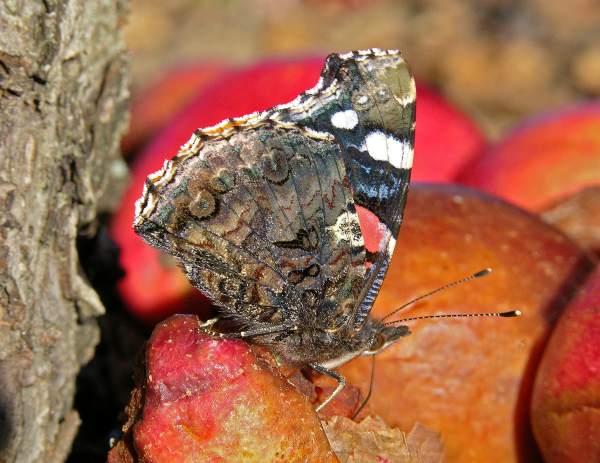
Distribution
Resident in southern Britain, this large and distinctive butterfly is moving further north as the climate warms up, and in Britain it can hibernate through all but the harshest of winters. The Red Admiral, once commonly known as the Red Admirable, can be seen throughout Britain and Ireland. In Europe its migratory range extends into northern Scandinavia, but it is resident only in the warmer southern countries.The Red Admiral butterfly also occurs as far south as the coastal countries of North Africa, and eastwards across Asia. Vanessa atalanta is also found in North America.

Lifecycle
Stinging Nettle (Urtica dioica) is the primary larval foodplant of the Red Admiral.
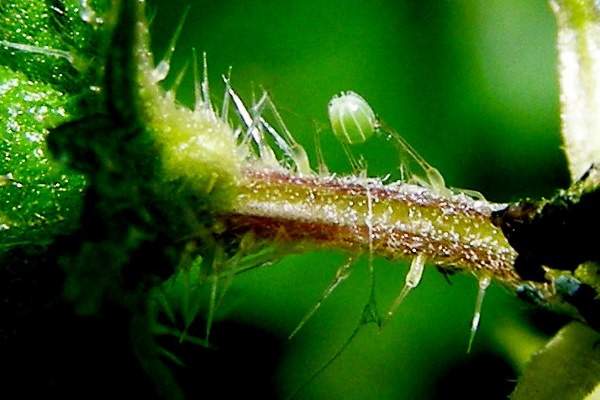
The green eggs, less than 1mm across, are laid singly on nettle leaves, and when after about a week the tiny larva with a blackish head and creamy body has hatched, it 'zips' a curled-up leaf with silk to form a cylindrical tent so it can rest concealed from predators; however, when it forays outside its tent to feed the caterpillar is much more vulnerable to predators. As it grows, a caterpillar will make several of these tents, each larger than its predecessor.
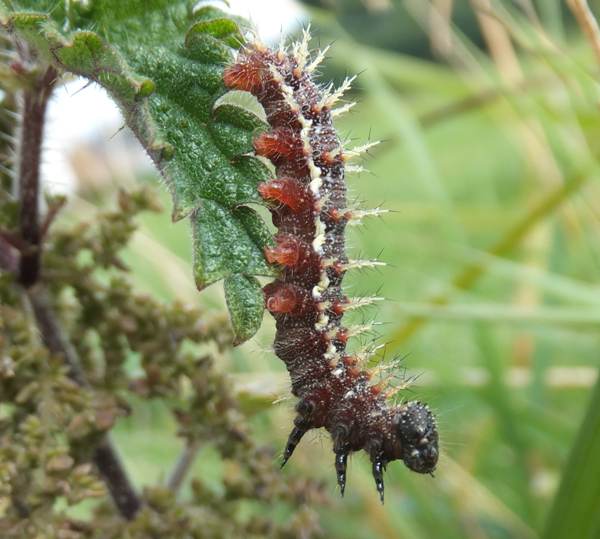
The spiny caterpillars darken after their first moult, most eventually becoming black but with yellow splashes on the sides of each body segment; however, some are of a green form but still with the yellow splashes on their sides.
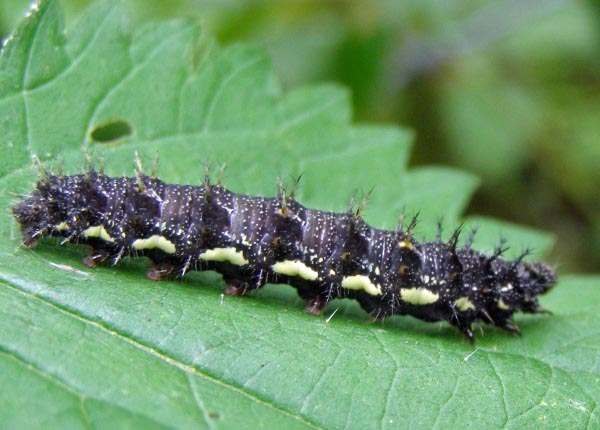
When ready to pupate, a caterpillar hangs with its head downwards within its tent and with its body bent into the form of a letter j, and there it turns into a chrysalis covered with bright golden patches. In typically twelve days the adult butterfly emerges from the chrysalis.
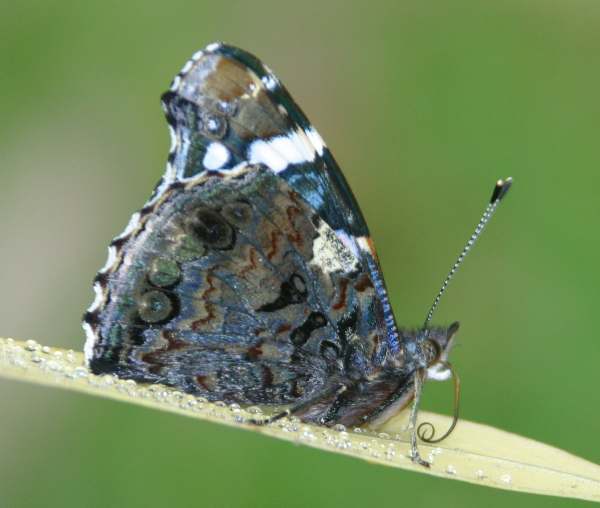
The adult butterflies hibernate, and with their wings closed (pictured left) they are far less conspicuous and so are able to avoid heavy predation. Unfortunately, in Britain very few survive the winter. Those that make it through the cold weather emerge in late winter or early spring, and they are later supplemented by much greater numbers that migrate northwards from the warm countries of North Africa southern Europe.
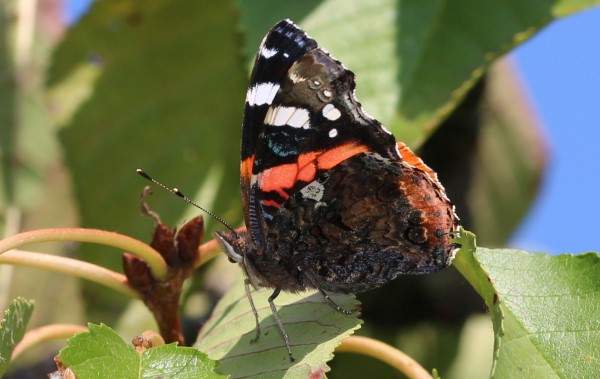
A later influx of migrants from France occurs in late summer, but by mid-August the Red Admirals begin leaving Britain and head off down south to warmer climes, where they spend the winter months in hibernation safe from severe frosts.
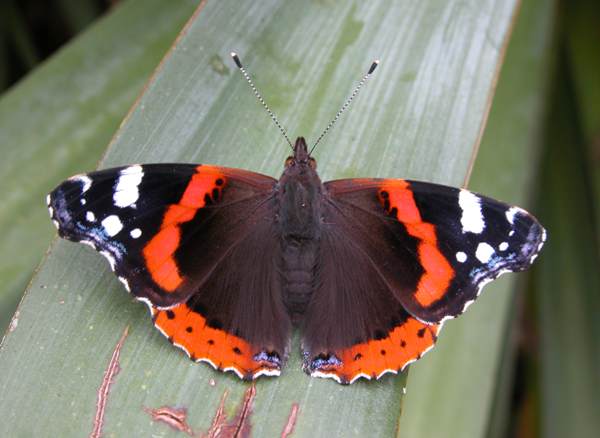
Aberrant Forms
There are many named aberrations of this lovely butterfly with either colour variations or alteration/absence of some typical markings. One of the most striking of these is the ab. Millerei, in which the normally red bands are replaced by white. An open-wing example is shown immediately below:
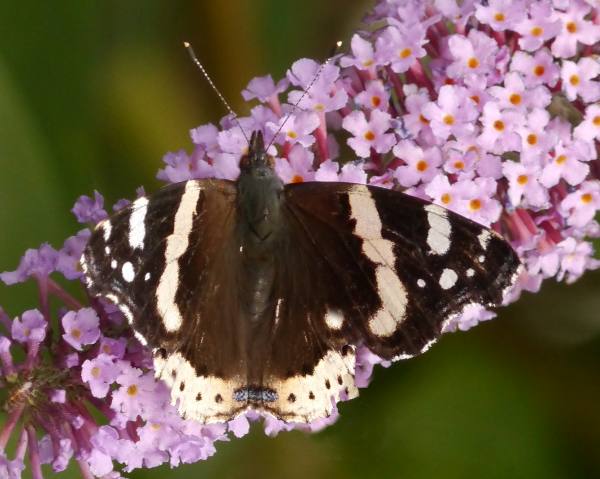
The next picture, also of this aberrant form, is and view of the closed wings:
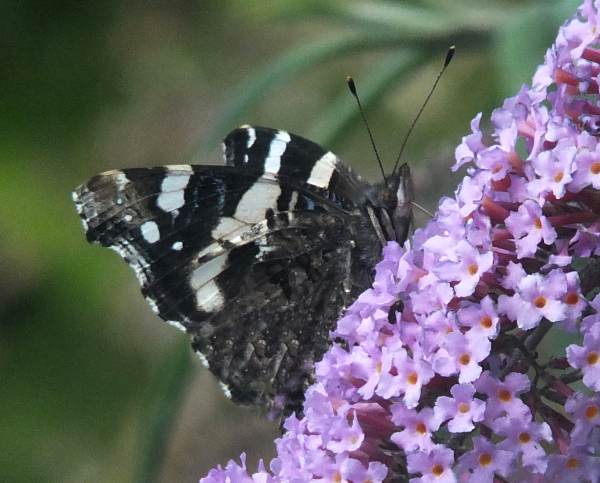
Etymology
The genus name Vanessa comes from the Greek word for abutterfly. We also have the Greeks to thank for the specific epithet atalanta: in Greek mythology, Atalanta was a fleet-footed hunter, who, by some accounts, was the only woman to sail with the Jason and the Argonauts in the search for the golden fleece.
Acknowledgements
This page includes pictures kindly contributed by Betty and Tony Rackham and by Steve Jelf.
Studying butterflies and moths...
Excited at the prospect of flyfishing? So are we, and we're pretty sure you would find the Winding River Mystery trilogy of action-packed thrillers gripping reading too. Dead Drift, Dead Cert, and Dead End are Pat O'Reilly's latest river-and-flyfishing based novels, and now they are available in ebook format. Full details on our website here...
Buy each book for just £4.96 on Amazon...
Please Help Us: If you have found this information interesting and useful, please consider helping to keep First Nature online by making a small donation towards the web hosting and internet costs.
Any donations over and above the essential running costs will help support the conservation work of Plantlife, the Rivers Trust and charitable botanic gardens - as do author royalties and publisher proceeds from books by Pat and Sue.
